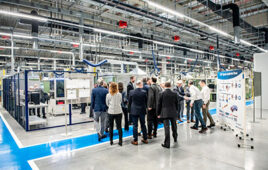Research indicates that the relationship between carbon and nitrogen is the catalyst for a myriad of environmental and human health concerns.
A University of Colorado study examines the growing worldwide problem of nitrogen pollution from soils to seas and the link between carbon and nitrogen that affects environmental and human health. This finding may help scientists and engineers develop new strategies, instruments, and equipment to solve regional problems that range from contaminated waterways to serious human health issues.

A new University of Colorado at Boulder
study shows that ratios of nitrogen and
carbon in soils, rivers, and oceans are closely
linked. (Photo by Casey A. Cass/University of
Colorado)
The study found the ratio between nitrates — a naturally occurring form of nitrogen found in soils, streams, lakes and oceans — and organic carbon is closely governed by ongoing microbial processes that occur in all ecosystems. The team combed databases containing millions of sample points from tropical, temperate, boreal, and polar sites, including well-known nitrogen-polluted areas such as the Chesapeake Bay, Baltic Sea, and Gulf of Mexico.
While the majority of nitrogen gas is abundant in the atmosphere, it is non-reactive and unavailable to most life. But in 1909 a process was developed to transform the non-reactive gas into ammonia, the active ingredient of synthetic fertilizer. Humans now manufacture more than 400 billion pounds of fertilizer each year — much of which migrates from croplands into the atmosphere, waterways and oceans — creating a suite of environmental problems ranging from coastal “dead zones” and toxic algal blooms to ozone pollution and human health issues.
The study indicates that throughout the Earth’s environment where there is substantially more dissolved organic carbon than nitrates, the nitrogen is sucked up by microbial communities. But most of these nitrates are probably not locked away forever. Instead, they are passed on to other ecosystems, moving pollution problems elsewhere in the environment.
The Colorado team looked at available data from every ecosystem type, ranging from high-altitude tundra and tropical forests to riparian areas and estuaries. They examined a large number of data sets, from sites as small as an office table to as large as entire oceans. They realized the same correlation between nitrogen and carbon wherever they looked. According to the report, if there is sufficient organic carbon present, it keeps the nitrates at a low level. By using available data, the team can make more accurate evaluations of when and where nitrate pollution may appear.
Nitrogen pollution is increasing globally in part because of fertilizer-intensive activities such as bio-fuel synthesis and meat production rely on the growth and cultivation of grains used to feed animals. Also, the burning of fossil fuels — which releases nitric oxide and nitrogen dioxide — causes ground-level ozone pollution. Some scientists have ranked nitrogen pollution as one of the top threats to global biodiversity.
High nitrate concentrations in drinking water also is a potential hazard to human health and may cause several types of cancer and elevate risks for Alzheimer’s disease and diabetes, while atmospheric nitrogen pollution can elevate cardiopulmonary ailments. Studies also have shown elevated nitrogen concentrations may increase the risks of several other human and wildlife diseases.
University of Colorado
www.colorado.edu
::Design World::
Filed Under: Green engineering • renewable energy • sustainability, Energy management + harvesting





Tell Us What You Think!